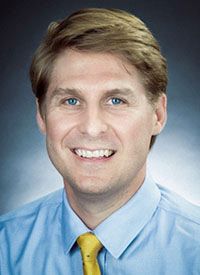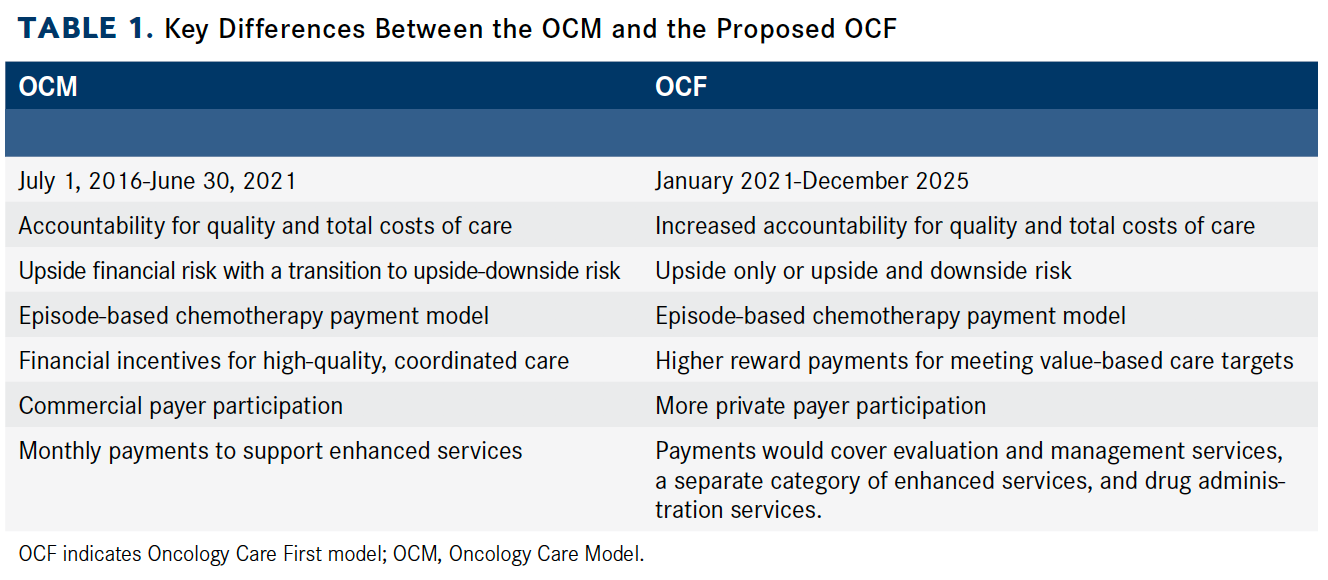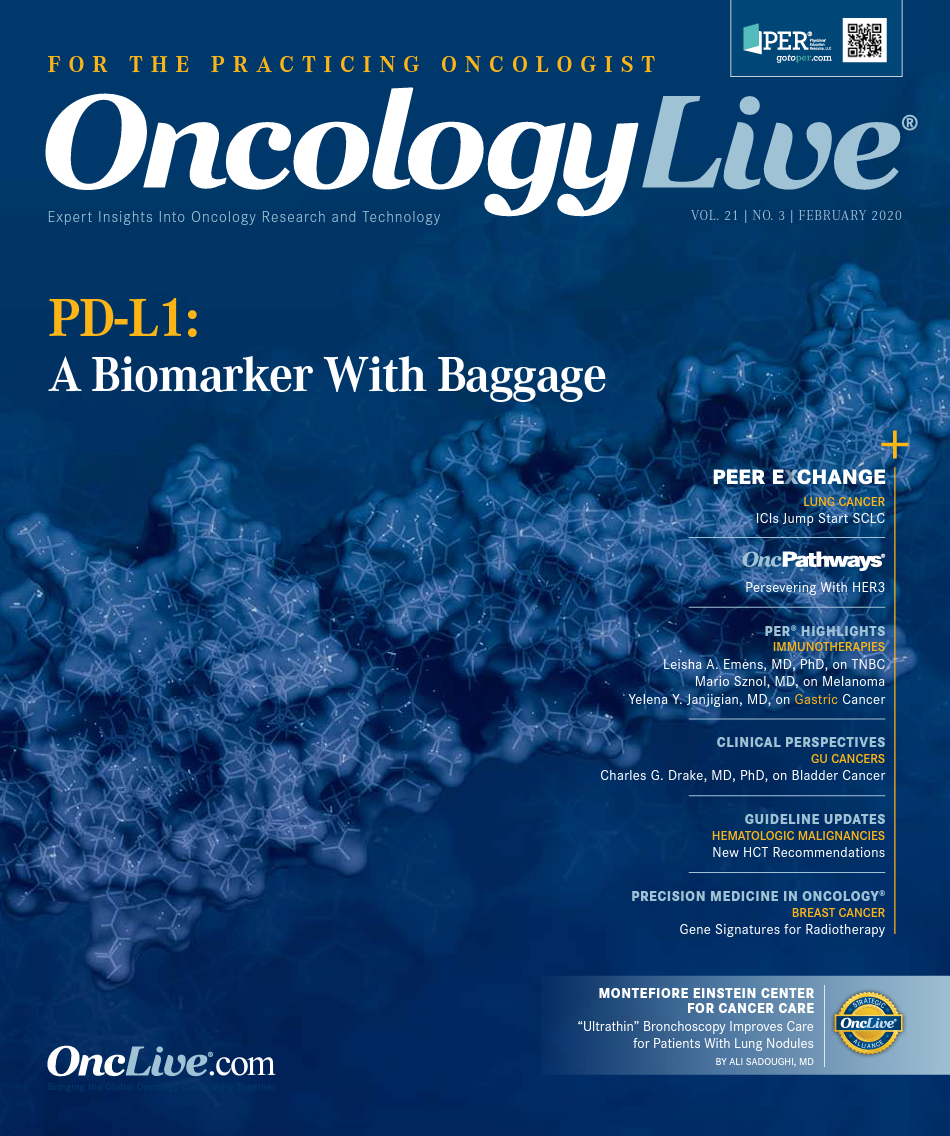Oncology Payment Models Fall Short of Desired Goals
There is a year and a half remaining in the life of the Oncology Care Model, and although the Centers for Medicare & Medicaid Services has leapt forward with a vision for the next-generation model of care Oncology Care First, many stakeholders feel that the Oncology Care Model is more than enough to think about right now.
Stephen M. Schleicher, MD, MBA, a cochair of the meeting, an oncologist at Tennessee Oncology, and chair of the Quality and Value Committee of OneOncology

Stephen M. Schleicher, MD, MBA
There is a year and a half remaining in the life of the Oncology Care Model (OCM), and although the Centers for Medicare & Medicaid Services (CMS) has leapt forward with a vision for the next-generation model of care Oncology Care First (OCF), many stakeholders feel that the OCM is more than enough to think about right now.
Just before the start of 2020, CMS invited practices and other stakeholders to comment on the blueprint for the OCF,1 which would incorporate some of the lessons learned from the OCM, now 3 years old (Table 1).2,3 At the time, many practices were grappling with an important transition point in the OCM: The decision whether to stay in the program and assume a higher level of financial risk.
Table 1. Key Differences Between the OCM and the Proposed OCF (Click to Enlarge)

Oncologists and others who crowded into a Nashville, Tennessee, ballroom for an Institute for Value-Based Medicine® forum, an initiative of The American Journal of Managed Care®, recently shared their thoughts, successes, and frustrations regarding the OCM.
Oncologists, through their experience with the OCM so far, do have a valuable body of knowledge that can inform decisions about patient care, said Stephen M. Schleicher, MD, MBA, a cochair of the meeting, an oncologist at Tennessee Oncology, and chair of the Quality and Value Committee of OneOncology, a network of community oncology practices. This knowledge needs to be enriched with further observation, and it also needs to be conveyed to those who have authoritative roles in patient care management, such as payers, he said.
“I think we’re ahead of the game on this,” Schleicher said. In his view, the oncology community should do the following 3 things:
- Understand the oncology models in depth because valuebased care (VBC) is here to stay.
- Educate payers on how to improve their policies to ensure that cost control does not come at patients’ expense.
- Optimize care coordination to prevent avoidable emergency department (ED) visits and hospitalizations, facilitate end-of-life care planning, and avoid unnecessary tests and pharmaceutical use.
Oncologists should think carefully about the need for medical tests and drugs before ordering them, he said. In this way, they can remain faithful to the tenets of VBC. “Think before that PET [positron emission tomography] scan, think before prescribing that expensive drug. Do we have a biosimilar instead?” he said.
Darin Gordon, who is widely credited with improving the finances of TennCare, the state’s $10.5 billion Medicaid managed care program, described how it took him a few years to “lean into” the idea of VBC and value-based purchasing (VBP).
He discussed a VBP framework created by the Health Care Payment Learning & Action Network,4 which subdivided models for payment into 4 categories: fee for service (FFS); FFS linked to quality and value; alternative payment models built on FFS architecture; and population-based payment.
Gordon, who is president and chief executive officer of Gordon & Associates in Nashville, Tennessee, said he “fully embraced” VBP at first but later realized it had limitations. “As a self-diagnosed valuebased purchasing zealot, I literally thought we should buy light bulbs on a value-based purchasing agreement. After going through it, you discover there is a lot of stuff that value-based purchasing isn’t suited for.”
For example, population-based payment, under which a provider accepts responsibility for the health of a patient group in exchange for a fixed amount of money, may not be an appropriate goal to strive for, Gordon said.
“There’s a big belief in the industry that we don’t arrive [at VBP] until we get everyone to [population- based payment]. I don’t think that’s right, either.”
However, nobody is defending FFS, he said. There is plenty of evidence that FFS does not work, even if the evidence on VBP is not yet conclusive. Because healthcare costs are rising, there is an overwhelming sense from payers that “we have to try something different,” he said.
In Tennessee, Gordon has seen wide variability in costs from provider to provider—a difference of as much as 3 to 6 times— that couldn’t be explained. “We needed more tools to incentivize quality improvement,” he said. However, he said, he didn’t want to tell doctors what to do or how to do it: “I wanted to…create a dynamic [in which] the provider could start asking different questions, should be asking different questions.”
Vanderbilt University has a communications tool to connect patients to doctors via text, and use of this system was absorbed by the university. However, it made Gordon realize he could use the state’s Medicaid program to increase payment for physicians who provide needed care that may not be directly covered by payers. “We know what we need to do for patients, and we also know we won’t get paid for doing those things,” Gordon said.
Although patient advocates worry that VBP agreements can be misused to restrict access to certain treatments, Gordon said he believes that these plans force providers to ask questions of themselves that help ensure patients have the best possible outcomes.
When VBP functions at its highest level—when payers, providers, and patients work together to improve health— “quite frankly, a lot of discussions about prior authorizations are meaningless,” he said.
The steep rise in the cost of oncology care is partly the reason for the development of new payment models, such as the OCM. But some are skeptical that CMS’ value-based care initiatives are entirely about improving care for patients with cancer.
“The cost of taking care of patients with cancer in the [United States] has exploded largely as a consequence of the cost of drugs that have brought great value for our patients but at a significant price, and the rate of the trend so far exceeds the average person’s income that nearly everybody says [it is] unsustainable,” said Michael Kolodziej, MD, FACP, vice president and chief innovation officer at ADVI Health, a healthcare and life sciences consulting company.
Kolodziej previously served as national medical director for oncology strategy at Aetna and, as a private oncology practitioner, participated in the OCM when it launched in 2016. “As a care delivery model, the OCM is awesome, but Medicare did not go into this to improve the quality of cancer care. They went into this to save money,” he said. “The payment is based on methodology that they developed, and I think anybody who spent time thinking about this recognizes that the model is way too complicated.”
After 3 and a half years in the OCM, what have oncologists learned? There are many bugs that still need to be worked out, Kolodziej said. Feedback from CMS based on claims information has shown that participating practices have managed to improve healthcare savings, yet in Kolodziej’s view, the model and its measures of performance are so confusing that many practices do not fully understand how they have managed to generate savings, which deprives them of the confidence that they can continue to succeed in the model.
One oft-stated concern about the OCM is that it does not sufficiently address outlier oncology costs, such as would be incurred for a handful of patients who require above-standard healthcare inputs. Providers feel that this places them at risk for failure. “This model does not fix their pain,” he said, because it does not address the cost of drugs.
Kolodziej recalled that when he was at Aetna in a partnership with Texas Oncology, the use of pathway protocols for treatment saved 20% of the cost of care. He said it was not Aetna’s medical home that achieved those savings. He also challenged the notion that payers consist of only health insurance plans. The employers are the payers, he said, and they are complaining loudly to health plans.
Although FFS as a payment method is diminishing, a large chunk of healthcare spending still goes toward treatments and tests that yield no improvement in outcomes. “We have a long history [over the past] 20 years of paying too much for stuff that doesn’t work. We’ve got some stuff now that works. That makes it really challenging,” he said. Kolodziej cited study findings that indicate many recent oncology drug approvals contributed no improvement to overall patient survival or quality of life, and among those that did, the gains were often marginal (Table 2).5-7
Table 2. Study Findings Show That a Fraction of Approved Agents Confers OS and QOL Advantages (Click to Enlarge)

Notably, findings from a study by Fojo et al showed that median gains in progression-free survival and overall survival were either not “clinically meaningful” or uncertain in significance for 58% of the 71 cancer therapies approved for the treatment of metastatic and/or advanced and/or refractory solid tumors between 2002 and 2014 based on American Society of Clinical Oncology criteria for meaningful improvements (Table 3).8 Adjuvant and neoadjuvant approvals were not included in the evaluation, nor were indications for hematologic malignancies.
Table 3. The Majority of FDA Approvals in Solid Tumors Would Not Qualify As “Clinically Meaningful Improvements” (Click to Enlarge)

Alternative payment models, such as the OCM, have failed to address issues such as these, Kolodziej said. In addition, the OCM remains an experiment in care that cannot be extended across the oncology care spectrum.
“I think that they cannot have a care model in which 85% of oncologists in the [United States] cannot participate, and that’s what OCM is right now.” Alternative payment models are not succeeding, he said.
Tools for Improved Care
Specialized toolsets can be used to improve care within alternative payment models, according to Robert Daly, MD, MBA, a medical oncologist specializing in lung cancer at Memorial Sloan Kettering (MSK) Cancer Center. He explained how MSK uses predictive data analytics to meet CMS’ quality measures for avoiding preventable hospitalization due to 9 conditions: neutropenia, fever, pain, dehydration, anemia, pneumonia, sepsis, nausea, and diarrhea.
With proactive care and increased communication, these conditions can be managed in outpatients, he said.
Why is this an issue? Patients on active treatment have 1 hospital admission and 2 ED visits per year; about 50% of those ED visits and 40% of the admissions are related to treatment toxicities, Daly said. There are 3 main reasons for this:
- Patients are not being equipped to manage adverse effects at home.
- Patients assume little can be done to help them and don’t seek care until symptoms worsen.
- Physician-patient communication may be suboptimal.
“As anyone who has treated patients with cancer knows, they’re not just coming in with 1 symptom, they’re coming in with clusters of symptoms,” Daly said.
Daly said MSK has developed a pilot study based on findings from an earlier MSK study on the effect of patient-reported outcomes (PROs) on survival and quality of life, which demonstrated that proactive self-management resulted in better outcomes for patients compared with standard of care, including a 30% improvement in quality of life, 7% fewer ED visits, and 5 months’ longer survival (P = .03).9 Patients reported 12 common symptoms for adverse events at and between visits using a web-based PRO questionnaire. When patients reported severe or worsening symptoms, an email alert was automatically sent to a clinical nurse.
The more recent program, called InSight Care, combines PROs with data and proactive care and case management to prevent hospitalizations and ED visits, keeping the patient “in sight” of the provider 24/7 through the use of digital technologies.10 Data analytics identifies the highest-risk patients: the 25% of new patients with cancer most at risk of arriving at MSK’s urgent care center. The risk model helps providers stratify patients to identify who is at high risk of a potentially preventable visit within the first 6 months.
The model combines data from the electronic health record, including laboratory tests, home medications, comorbidities, and psychosocial data, to create a risk score. Doctors can add patients to the high-risk group using an override feature. In addition, Daly said, the interface that the patient sees is designed to lower barriers to patients’ completion of assessments. The questions have binary answers (yes or no), and the patient can give more details and use an avatar to provide a visual description of symptom location. The MSK staff can tell instantly tell if the alerts are mild, moderate, or severe. If necessary, the team can see the patient through a specialized video portal, instead of making the individual drive into New York City. As the pilot nears the 1-year mark, Daly said, the data show an effect, with a 59% reduction in high-risk patients visiting the urgent care center. Within the program’s first 30 days, there was a 60% adherence rate of completing assessments; for patients being treated for more than 3 months, a 50% adherence rate.
“That means we’re getting the symptom data from patients every other day on active treatment. That really helps to take better care of them,” Daly said.
Patients love the system, he said, because they know a member of the care team will get back to them within minutes. “They feel that they’re never alone, that there’s this team that is responding to them and helping to get them through their treatment. And they like the remote consultation,” Daly said. Oncologists like the system because they know that their patients are being taken care of while they are busy in the clinic, he added.
Some of the issues that have arisen include trust, Daly said. “This is an extension of the primary team working with the primary oncology teams to manage those symptoms,” he said. “How do we build trust with the primary oncology teams so that they feel those symptoms are being managed in a way that they would want them to be managed?”
In addition, MSK initially hired clinicians with experience in palliative, supportive, and symptom care for the project, but as time went by, it became clear that patients prefer someone with diseasespecific experience.
Of note, when CMS held an informational session November 4, 2019 about the OCF model, officials announced that electronicbased PROs will be required.
Note: This article originally appeared in AJMC® Evidence-Based Oncology™, available at ajmc.com/link/4466.
References
- Innovation Center. Public listening session: informal RFI on Oncology Care First model. CMS website. innovation.cms.gov/resources/oncology-listening-session.html. Updated November 14, 2019. Accessed November 20, 2019.
- Innovation Center. Oncology Care Model. CMS website. innovation.cms.gov/initiatives/oncology-care/. Accessed January 6, 2019.
- Innovation Center. Oncology Care First model: informal request for information. innovation.cms.gov/Files/x/ocf-informalrfi.pdf. Accessed January 6, 2019.
- What is the Health Care Payment Learning & Action Network? Health Care Payment Learning and Action Network website. hcp-lan.org/. Accessed November 21, 2019.
- Prasad V. Do cancer drugs improve survival or quality of life? BMJ. 2017;359:j4528. doi:10.1136/bmj.j4528.
- Kim C, Prasad V. Cancer drugs approved on the basis of a surrogate end point and subsequent overall survival an analysis of 5 years of US Food and Drug Administration approvals. JAMA Intern Med. 2015;175(12):1992-4. doi: 10.1001/jamainternmed.2015.5868.
- Davis C, Naci H, Gurpinar E, Poplavska E, Pinto A, Aggarwal A. Availability of evidence of benefits on overall survival and quality of life of cancer drugs approved by European Medicines Agency: retrospective cohort study of drug approvals 2009-13. BMJ. 2017; 359:j4530. doi: 10.1136/bmj.j4530.
- Fojo T, Mailankody S, Lo A. Unintended consequences of expensive cancer therapeutics—the pursuit of marginal indications and a me-too mentality that stifles innovation and creativity: the John Conley lecture. JAMA Otolaryngol Head Neck Surg. 2014; 140 (12):1225-1236. doi: 10.1001/jamaoto.2014.1570.
- Basch E, Deal AM, Dueck AC, et al. Overall survival results of a trial assessing patient-reported outcomes for symptom monitoring during routine cancer treatment. JAMA. 2017;318(2):187-198. doi: 10.1001/jama.2017.7156.
- Daly B, Baldwin-Medsker A, Perchick W. Using remote monitoring to reduce hospital visits for cancer patients. Harvard Business Review. 2019. hbr.org/2019/11/using-remote-monitoring-to-reduce-hospital-visits-for-cancer-patients. Accessed January 6, 2019.




